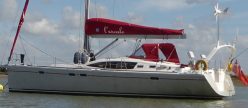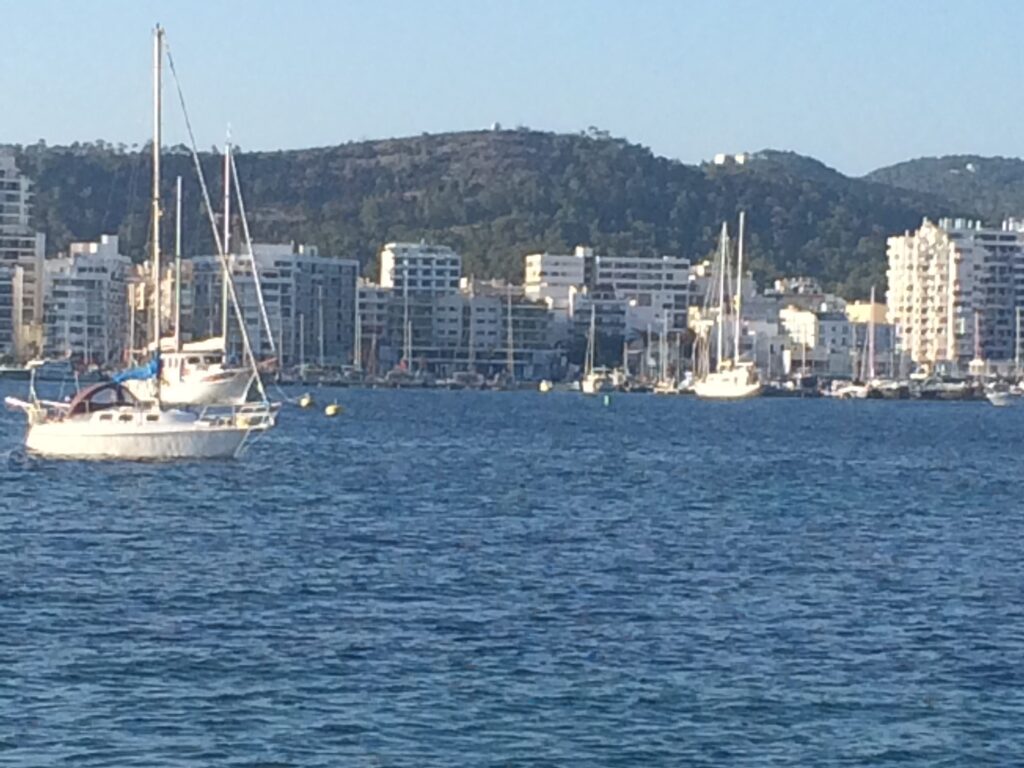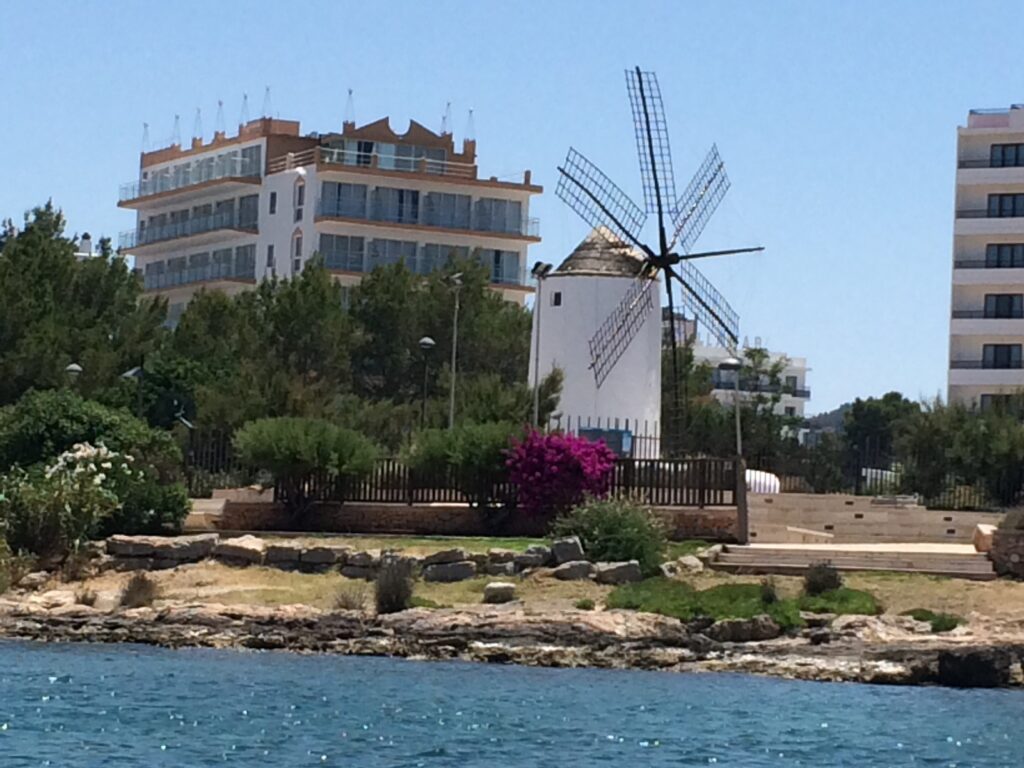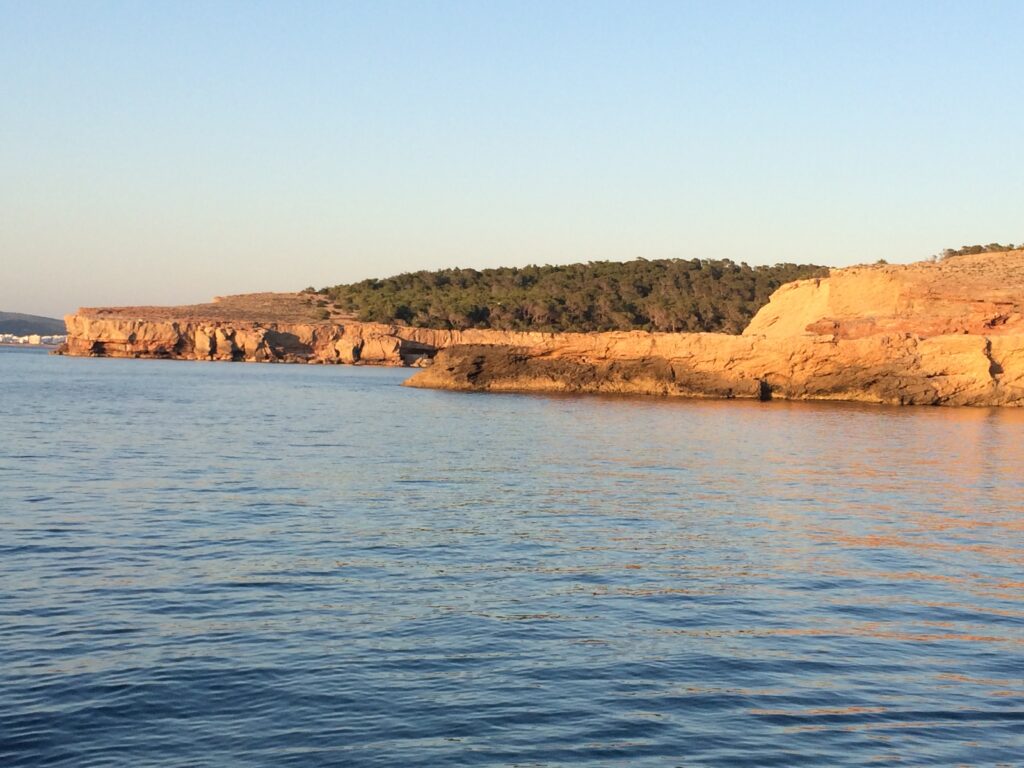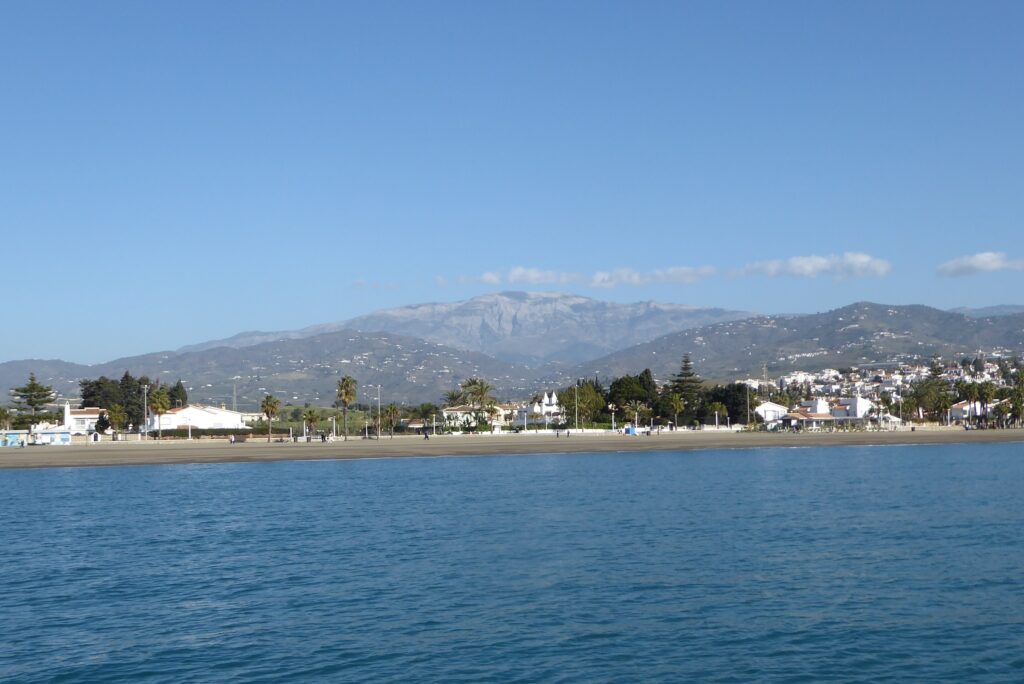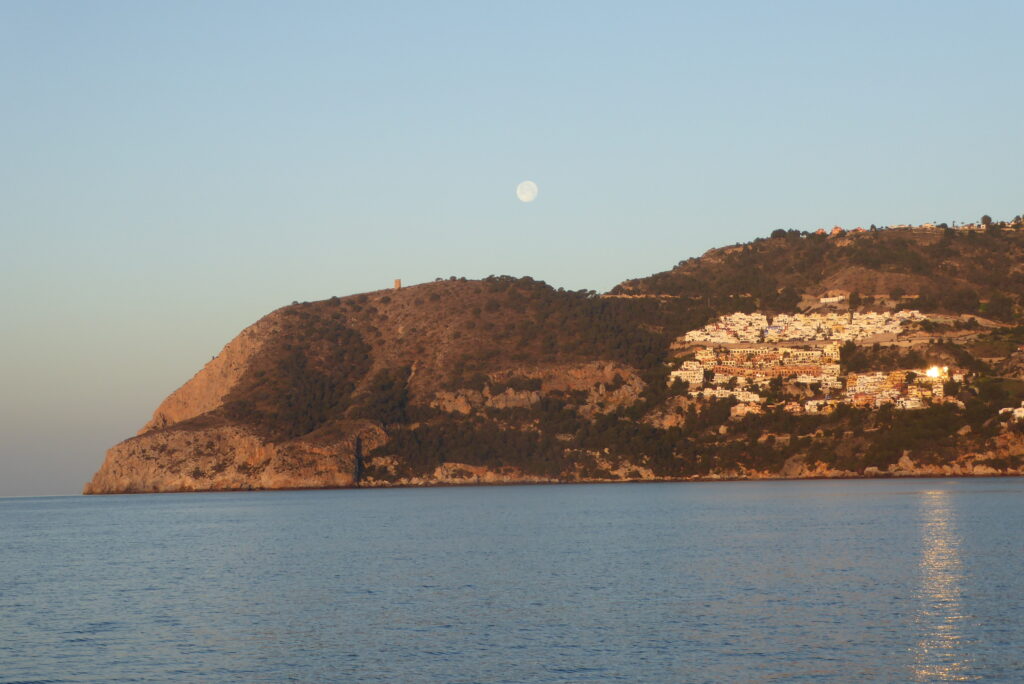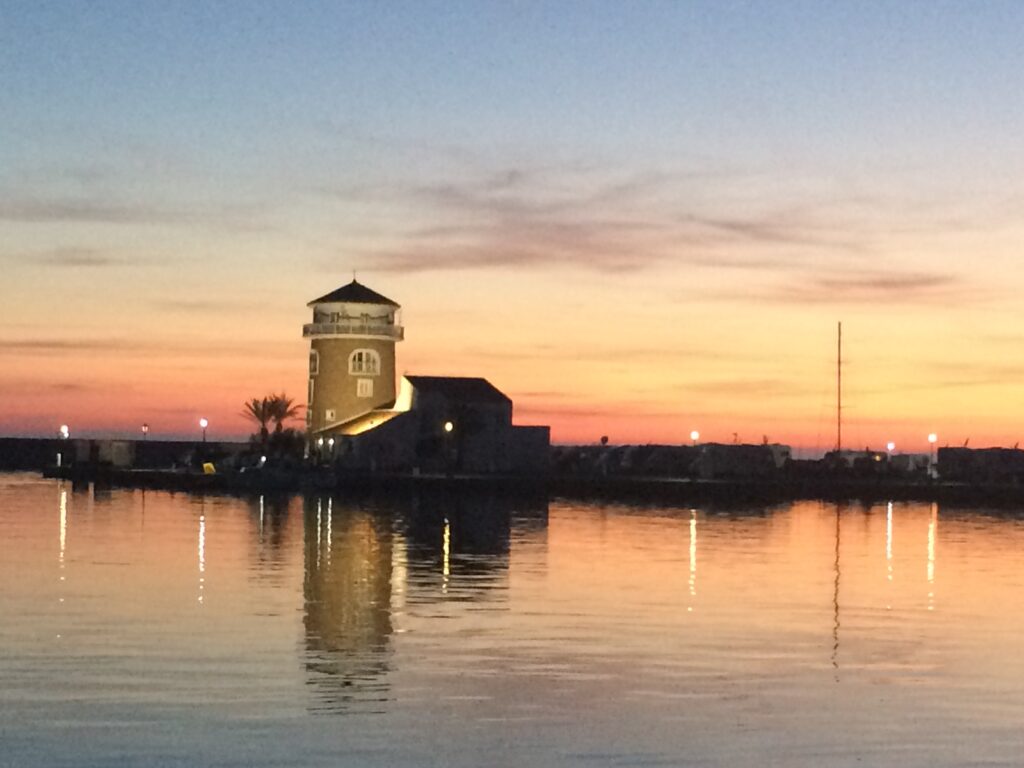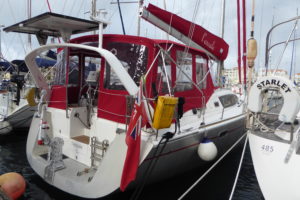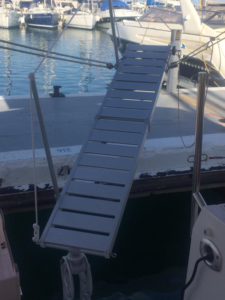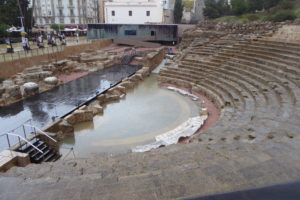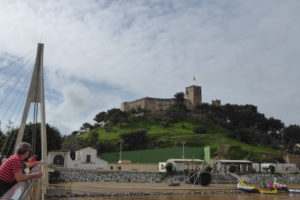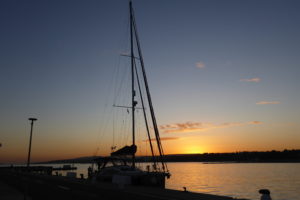Saturday 27 June – Saturday 4 July
Having restocked the fridge and stowed the clean laundry, it was time to tackle the offshore domestic requirements of emptying holding tank and making fresh water. Skipper installed a waste treatment system for our inboard toilet when the boat was new. This works by creating a chemical reaction between an electric current and seawater, which sterilises matter to a state of ‘grey water’ harmless to the marine environment. Nevertheless, we are still careful to discharge well out to sea. Furthermore, we feel that water is better made away from land, where we hope there will be fewer pollutants.
Skipper installed Walt, our Spectra water maker, during our escale in Gibraltar, and it is totally earning its keep, increasing our cruising freedom enormously. During our second Summer aboard, among the often remote islands of Northwest Scotland, finding and being able to access drinking water was a constant concern. Now, combined with the large solar panel that sits atop our stern arch, (installed by Skipper during our 2018-19 Winter stopover in Plymouth), we are able to convert the long hours of sunshine here in the Western Mediterranean directly into water! Walt has two motors, which can be run independently or in tandem, and pull around 10 Amps each. The solar panel feeds the batteries efficiently enough to meet this 20A requirement, in addition to keeping the fridge cool enough to chill the beers. Walt replenishes our water tanks at the rate of around 60 litres an hour, plenty for our approximate daily usage of 80 litres. As we rarely stay in any one anchorage more than three days, this represents true cruising luxury.

On Saturday 27 June, we relocated to Port de Sant Miguel, a very pretty anchorage in a fairly narrow, steep-sided cala on the Northwest coast. When we arrived the breeze was coming into the cala, so we anchored with our bow pointing out to sea. However, by the time a 38-foot Spanish-flagged catamaran arrived, the wind had dropped and we had turned 180˚. The cat tried to anchor very close to our stern, potentially right on our anchor, and when we explained where our anchor was lying, he shouted at us that we were in Ibiza now, and it’s not done here to lie other than with the anchor off the bow – evidently basic physics was not his subject. Fenders were strategically positioned, and a calm night was enjoyed.
After a quiet day at anchor on Sunday, we took the tender ashore on Monday morning, slipped on our sturdy walking boots, and set off over the shoulder of the hill that divides Port de Sant Miguel from the neighbouring beach of Benírras. As usual, it was hot and sunny, but with very little traffic it was possible to enjoy the constant background of the cicadas and breathe in the sweet pine fragrance. There was a surprising number of wildflowers still dressing the verges and hedgerows, obviously well-adapted to the arid environment, and also a selection of cacti was noted.
On arrival at Benírras beach, hot, tired and thirsty, we were relieved to find the chiringuita (beach bar/restaurant) ‘Elements’ very much open for business. Set with bleached wood furniture and cool funky background music, we were served an excellent organic home-made lunch with cool beer and a delightfully laid-back vibe. It was decided this was a fitting way to celebrate the crew’s birthdays, Skipper’s missed completely in the first week of lockdown back in Valencia, and Mate’s coming later in the week.
Suitably refreshed and relaxed, we set off on the return walk, deciding to deviate onto a forest track that “looked like it went in the right direction”…When it had been obvious for some time that we were not heading where we wanted to, Skipper took a look at Google Maps and a very kind young man stopped his car to ask if we needed help. We retraced our steps a short way before taking a track displaying a very faded and weathered Privado notice, and soon found our way down a steep, stony path back to the valley floor and the beach where our tender patiently awaited our return.
Relieved to slip out of our boots onto the hot sand, there was still time to enjoy a cooling freshly squeezed local orange juice/beer to celebrate our 15-kilometre hike.
On Tuesday the anchorage was very bouncy and we realised we were no longer securely anchored – perhaps yesterday’s comings and goings whilst we were on land had dislodged our anchor? We lifted it to set off under a first reefed main and staysail in a Nor-easterly F4-5, along the coast to the NE corner below the unusual lighthouse at Punta de Moscarter. It is the tallest in the Balearics at 52 metres, and is painted in a diagonal black stripe on white, reminiscent of a candy cane. The wind gradually eased to ESE F4, and we added the genoa for the fun of it, before settling to anchor off Portinatx, a very sheltered and attractive cala with a beach and village ashore.
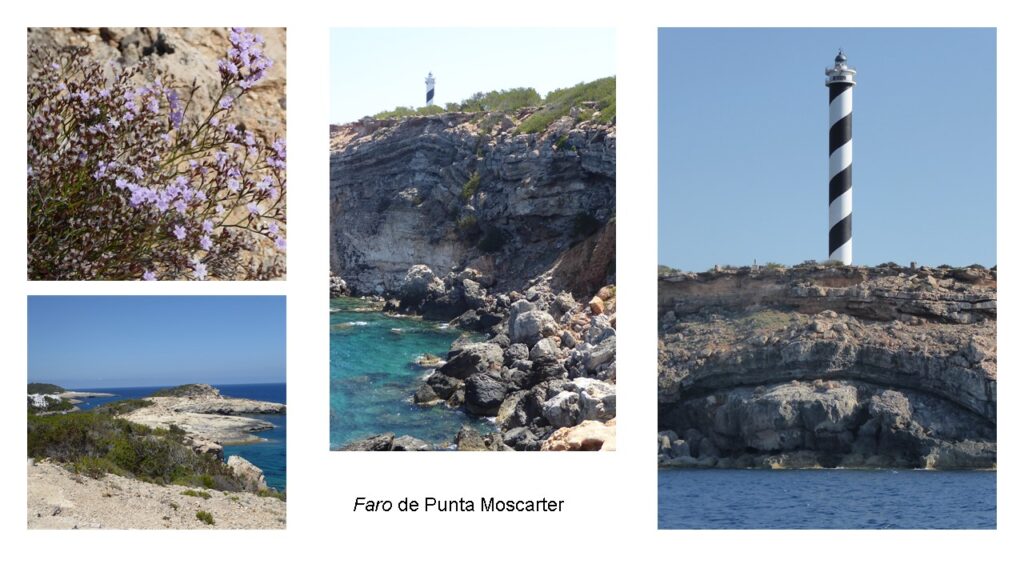
On Wednesday 1 July we enjoyed a (much shorter) clifftop walk to the faro, the lighthouse, before returning to Sant Antoni on Thursday, under gennaker in a light Northeasterly. As usual, we made water on the way, and by late afternoon were settled in almost exactly the same spot as last weekend. Friday was eaten up by a trip to shore for a food shop, and Saturday (Mate’s fourth birthday – aboard) we dragged Bertha up the hill to the launderette. Sometimes it’s enough of a celebration just to be on top of the domestics, and the birthday had been celebrated on and off for the last several weeks, with some retail therapy, trips ashore and meals out – no cooking, and no clean-up!
